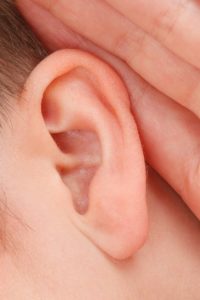
Inside The Ear
When we process sound, it goes through several steps before it becomes something that we can truly hear. Sounds funnel into the ear canal, which is shaped like a spiral and cause vibrations within the eardrum. These vibrations affect the fluid and hairs within the cochlea and transmit to the auditory nerve. When this series of events is triggered the nerve sends the information it receives to the brain where it translated into understandable information.
Hearing Device Science
When there is an issue within the ear, as can often happen, the technology of hearing devices comes to the rescue. With the invention of digital technology, the capabilities of hearing products have increased exponentially. Some of the first hearing aids on the market were analog hearing devices; these were fairly straightforward with minimum customization. They were used to amplify all speech and noise frequencies with no distinction. As they developed, they gained the ability to have multiple settings for different environments. Digital Hearing aids use some of the same features as their analog cousins, but they contain a small computer chip that helps to filter and analyze sounds for better performance. One of the best examples of their ability to filter is that if the wearer is in a busy restaurant, a digital hearing aid will only allow the sounds of speech to be passed through rather than the significant background noise.
Contact Bay Area Audiology Today!
Ready to change the way you look at hearing loss? Our Doctor of Audiology, Dr. Trisha A. Bents Muth, is exceptionally experienced in the art of audiology, and is dedicated to providing the absolute best solutions. Bay Area Audiology has been working to give patients a comfortable environment, with thorough evaluations. We are independently owned, and unbiased when it comes to finding you the care you need.
You can always come into the office, or contact us in advance to set up an appointment. We also provide updates on our social media websites. You can check out our Facebook, Twitter, LinkedIn, and Pinterest to keep up with Bay Area Audiology.
Don’t hesitate–we can help.
